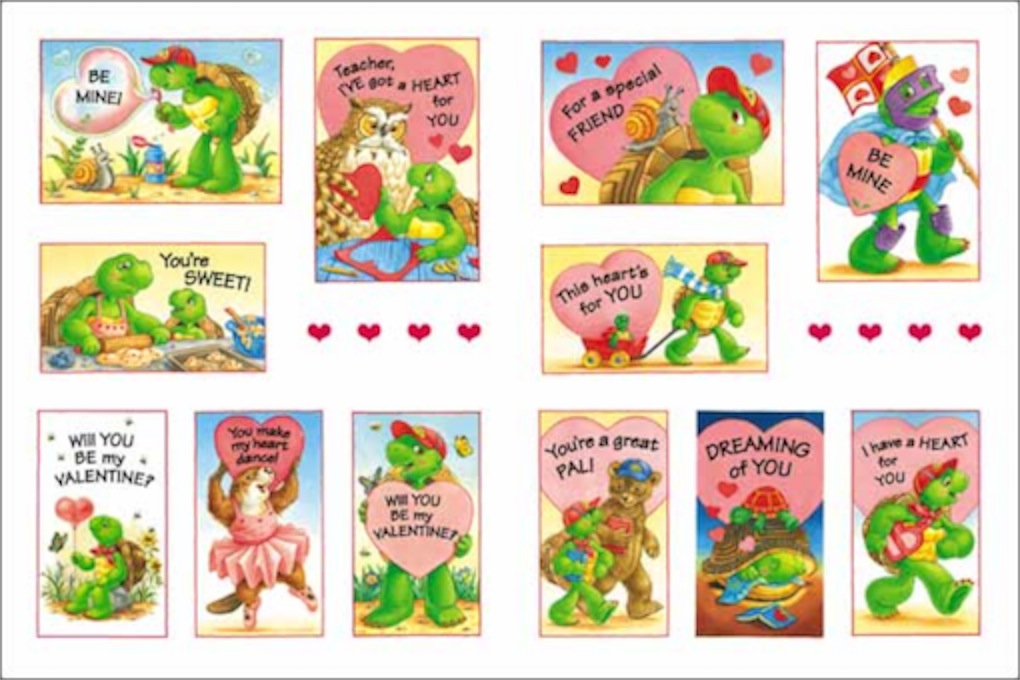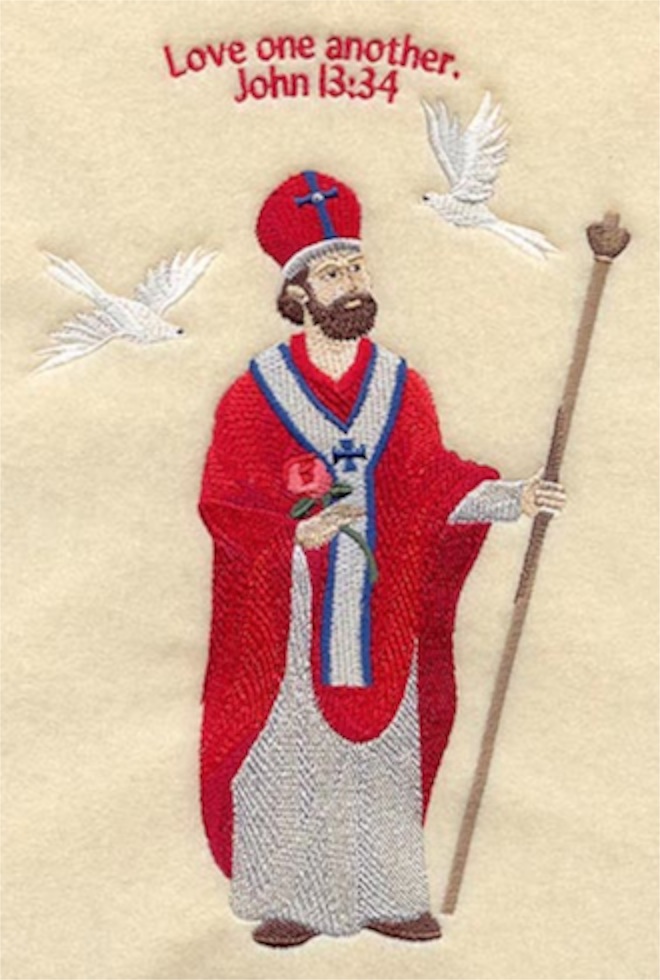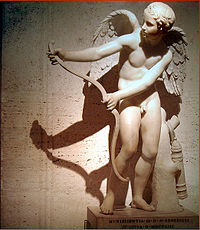Valentine's Day
14/02/12 04:32
Recently we were talking about how holidays have changed over the span of our lifetimes. We remember Valentine’s Day as being predominantly a children’s holiday when we were growing up. We made Valentine’s boxes, usually a shoe box decorated in red, white and pink paper, often with a heart cut out of a paper doily and a slot cut into the top. Most of us got inexpensive Valentine’s cards. They were printed on sheets and punched out, signed and placed in lightweight envelopes with the names of our classmates on the outside. At my house, we used a list of all of the children in our class to make sure that no one was left out. There would usually be a Valentine’s Party during the last half hour of the school day with cupcakes or cookies and a few candy hearts. The day was mostly a celebration of friendship. I can’t remember if my parents exchanged gifts on Valentine’s Day. I think there may have been a box of chocolates on some years, but I am not sure.

Valentine’s Day receives a big marketing push these days. As soon as the Christmas decorations are put away, Valentines are put on display. Retail stores devote entire sections of floor space to special cards, candies, decorations, stuffed animals, flowers and other gifts. Scanning the ads in the newspaper it appears that jewelry and underwear top the list of gifts that should be exchanged. Hotels and restaurants promote special Valentine’s Day packages and couples scramble to find babysitters under a sense of obligation and pressure to plan the perfect romantic evening.
 The origins of the celebration are a bit obscure. It is difficult to identify a single St. Valentine. Saints days are usually the day of their death or sometimes the day of their funeral. It is possible that the original St. Valentine could have been a priest in Rome, a bishop of Interamna, or a martyr in Africa. The official Roman Martyrology lists seven Saints Valentine. There are disputes about whether the saint’s day was originally recognized in July, October, November or February, as is the contemporary tradition. By the late 15th Century, stories arose of a priest who defied a Roman ban on the marriage of Christian couples. The report was that emperor Claudius II (Claudius Gothicus) ordered the arrest of anyone who conducted the marriage of a Christian couple as part of a crackdown on the emerging religion. Valentine defied the order and was arrested. Claudius, however, took a liking to the prisoner until Valentine tried to convert Claudius, whereupon he was executed. The first stories appear about 1200 years after the event reportedly took place, so tracing the origin to a single individual seems unlikely.
The origins of the celebration are a bit obscure. It is difficult to identify a single St. Valentine. Saints days are usually the day of their death or sometimes the day of their funeral. It is possible that the original St. Valentine could have been a priest in Rome, a bishop of Interamna, or a martyr in Africa. The official Roman Martyrology lists seven Saints Valentine. There are disputes about whether the saint’s day was originally recognized in July, October, November or February, as is the contemporary tradition. By the late 15th Century, stories arose of a priest who defied a Roman ban on the marriage of Christian couples. The report was that emperor Claudius II (Claudius Gothicus) ordered the arrest of anyone who conducted the marriage of a Christian couple as part of a crackdown on the emerging religion. Valentine defied the order and was arrested. Claudius, however, took a liking to the prisoner until Valentine tried to convert Claudius, whereupon he was executed. The first stories appear about 1200 years after the event reportedly took place, so tracing the origin to a single individual seems unlikely.
Valentine’s Day as a holiday may have its roots in other places. Some claim that it was an attempt by the Medieval Church to supersede the pagan holiday of Lupercalia, though such claims have also bee disputed by some scholars. The association of he day with romantic love seems to have gotten a big boost from the writings of Geoffrey Chaucer. Chaucer’s “Parliament of Foules” is set in a fictional context of an old tradition, but there is little evidence that the tradition existed before the book.
The confusion of the day and its origins seems appropriate. Love, after all, is a confusing thing for humans. It is an emotion, but it is expressed in deep commitment. Attempts at explaining love often end up as a jumble of words that do not fully explain the sentiment.
Greek, the language of the New Testament, has at least four words for love, each describing a different kind of love. Three of those words are used in the Bible. Philia is the affection between friends. Eros is the passion that flares between lovers. Agape is unconditional love, given without expectation of anything in return. It is this third kind of love that gains the most biblical attention. A forth Greek for love, storge, refers to familial love, such as the love of a parent for a child. Like many other complex concepts, the words get interchanged and often one word is used in the definition of another.
Scientific studies try to reduce love to chemistry with talk about dopamine and oxytocin, vasopressin and opioids. Neuroscientists refer to a small part of the brain called the ventral tegmental area. Journalist David Brooks in “The Social Animal,” speaks in terms of pheromones and lowered cortisol levels. He refers to the exchange of siliva in a kiss as a way of collecting genetic information. The reflections may have some kind of obscure meaning and may have a degree of detailed observation, but they are in no way a satisfying explanation of love.
The more we try to talk about love, the more we try to analyze it, the more we try to understand love – the more it seems that we really don’t understand anything at all. The novelist David James Duncan wrote, “People often don’t know what they’re talking about. When they talk about love, they really don’t know what they’re talking about.”
 Maybe that is true of the holiday we recognize today. It is a celebration of something that we really don’t understand and therefore our celebration is somewhat confused. We celebrate a day that may or may not have its roots in the Greek concept of agape, as may or may not have been demonstrated by the martyrdom of a priest or bishop by exchanging cards with pictures of a Roman God often portrayed as a child with a bow and an arrow. No wonder we’re confused!
Maybe that is true of the holiday we recognize today. It is a celebration of something that we really don’t understand and therefore our celebration is somewhat confused. We celebrate a day that may or may not have its roots in the Greek concept of agape, as may or may not have been demonstrated by the martyrdom of a priest or bishop by exchanging cards with pictures of a Roman God often portrayed as a child with a bow and an arrow. No wonder we’re confused!
What we do know is that love is a wonder. It is a joy that has the capacity to surprise and delight us. It makes us capable of sacrifice and service that reach far beyond our natural tendencies. It is worthy of our time and attention. Love should be celebrated.
I have been lucky in love. We have been given the gift not only of having grown up together, but now are experiencing the exquisite joy of growing old together. It is something that we can’t explain to young couples. We leave it for them to discover on their own. But we do hope they will discover it. There really is nothing better in this life than love over the span of many years. With the perspective of many decades of the coming and going of February 14, I prefer to celebrate love every day and not relegate the observance to a single day each year.
So have a happy Valentine’s Day. Enjoy yourself. But don’t forget to be thankful for the gift of love on all of the other days.

Valentine’s Day receives a big marketing push these days. As soon as the Christmas decorations are put away, Valentines are put on display. Retail stores devote entire sections of floor space to special cards, candies, decorations, stuffed animals, flowers and other gifts. Scanning the ads in the newspaper it appears that jewelry and underwear top the list of gifts that should be exchanged. Hotels and restaurants promote special Valentine’s Day packages and couples scramble to find babysitters under a sense of obligation and pressure to plan the perfect romantic evening.

Valentine’s Day as a holiday may have its roots in other places. Some claim that it was an attempt by the Medieval Church to supersede the pagan holiday of Lupercalia, though such claims have also bee disputed by some scholars. The association of he day with romantic love seems to have gotten a big boost from the writings of Geoffrey Chaucer. Chaucer’s “Parliament of Foules” is set in a fictional context of an old tradition, but there is little evidence that the tradition existed before the book.
The confusion of the day and its origins seems appropriate. Love, after all, is a confusing thing for humans. It is an emotion, but it is expressed in deep commitment. Attempts at explaining love often end up as a jumble of words that do not fully explain the sentiment.
Greek, the language of the New Testament, has at least four words for love, each describing a different kind of love. Three of those words are used in the Bible. Philia is the affection between friends. Eros is the passion that flares between lovers. Agape is unconditional love, given without expectation of anything in return. It is this third kind of love that gains the most biblical attention. A forth Greek for love, storge, refers to familial love, such as the love of a parent for a child. Like many other complex concepts, the words get interchanged and often one word is used in the definition of another.
Scientific studies try to reduce love to chemistry with talk about dopamine and oxytocin, vasopressin and opioids. Neuroscientists refer to a small part of the brain called the ventral tegmental area. Journalist David Brooks in “The Social Animal,” speaks in terms of pheromones and lowered cortisol levels. He refers to the exchange of siliva in a kiss as a way of collecting genetic information. The reflections may have some kind of obscure meaning and may have a degree of detailed observation, but they are in no way a satisfying explanation of love.
The more we try to talk about love, the more we try to analyze it, the more we try to understand love – the more it seems that we really don’t understand anything at all. The novelist David James Duncan wrote, “People often don’t know what they’re talking about. When they talk about love, they really don’t know what they’re talking about.”

What we do know is that love is a wonder. It is a joy that has the capacity to surprise and delight us. It makes us capable of sacrifice and service that reach far beyond our natural tendencies. It is worthy of our time and attention. Love should be celebrated.
I have been lucky in love. We have been given the gift not only of having grown up together, but now are experiencing the exquisite joy of growing old together. It is something that we can’t explain to young couples. We leave it for them to discover on their own. But we do hope they will discover it. There really is nothing better in this life than love over the span of many years. With the perspective of many decades of the coming and going of February 14, I prefer to celebrate love every day and not relegate the observance to a single day each year.
So have a happy Valentine’s Day. Enjoy yourself. But don’t forget to be thankful for the gift of love on all of the other days.